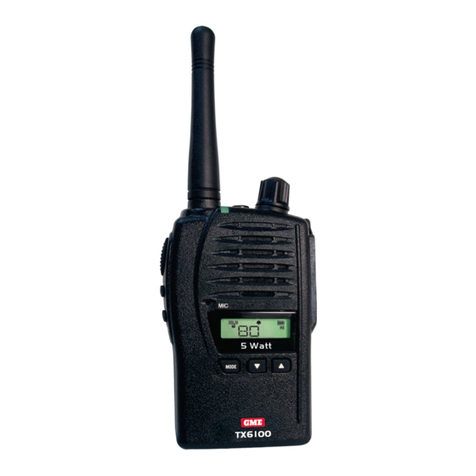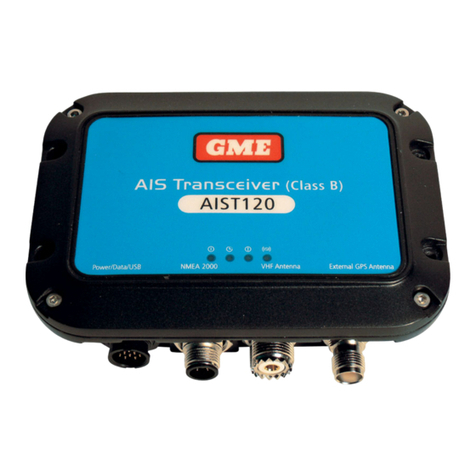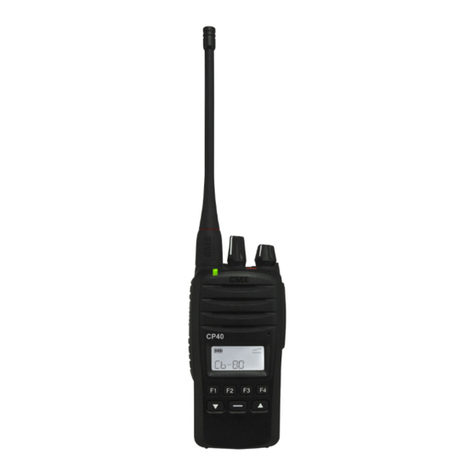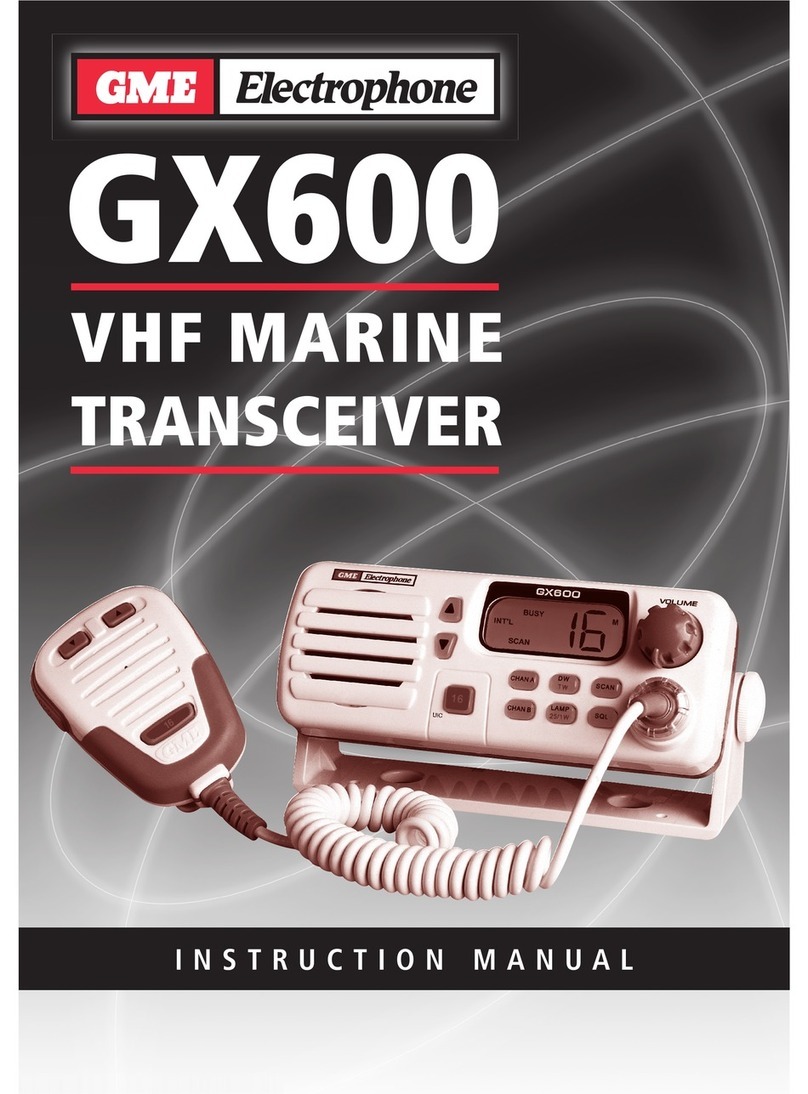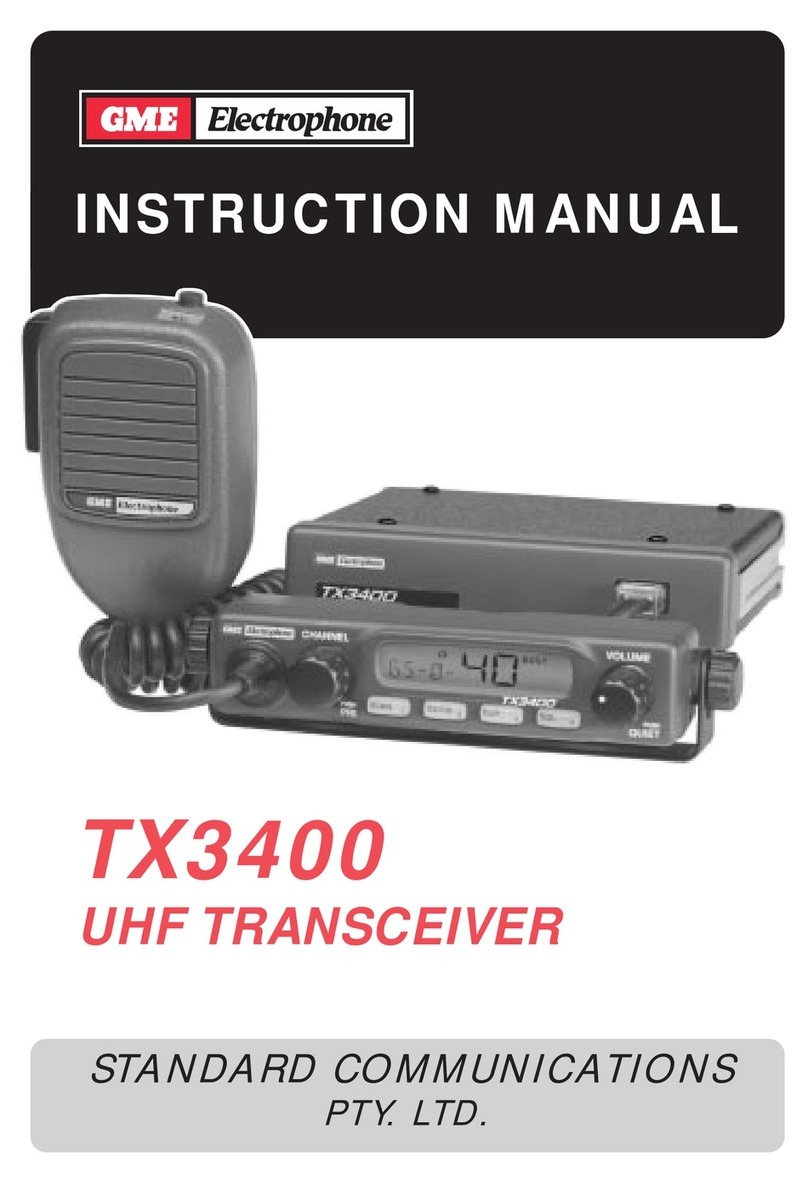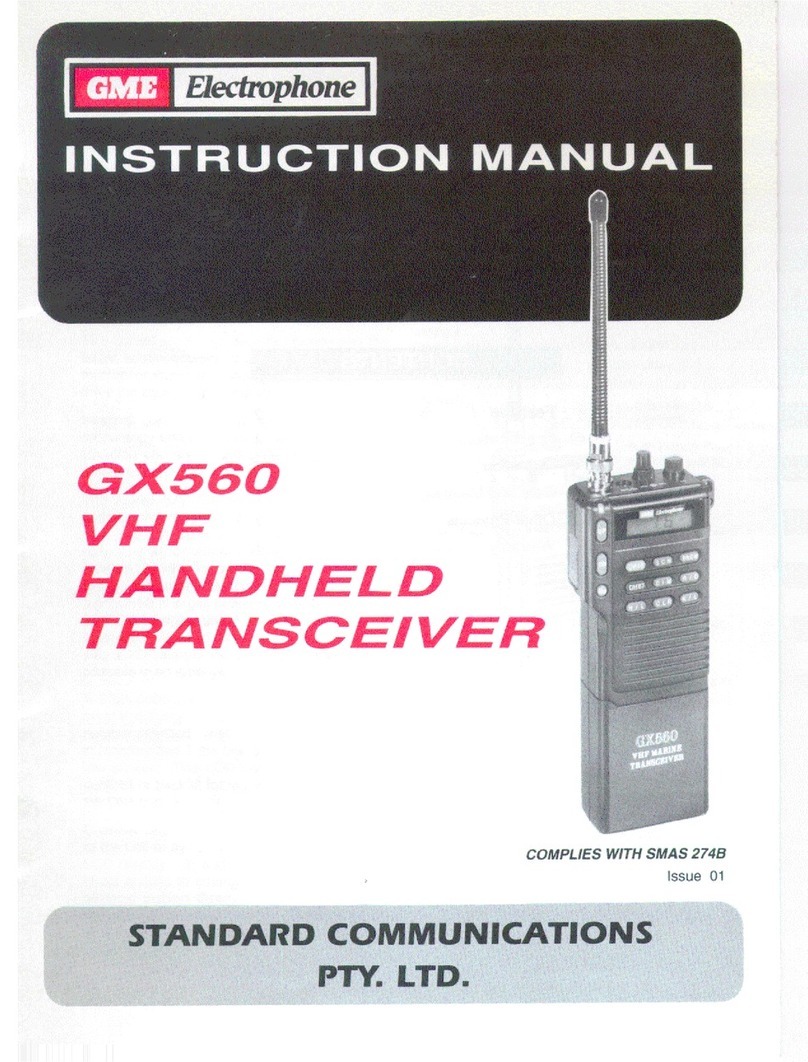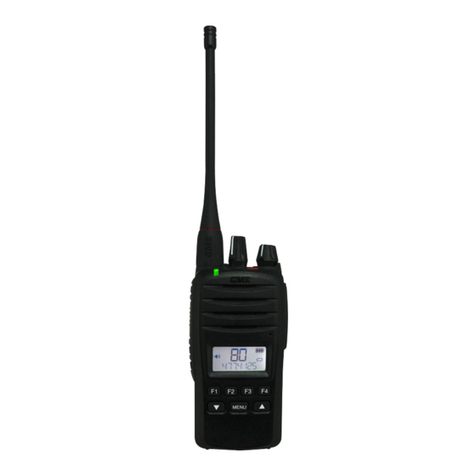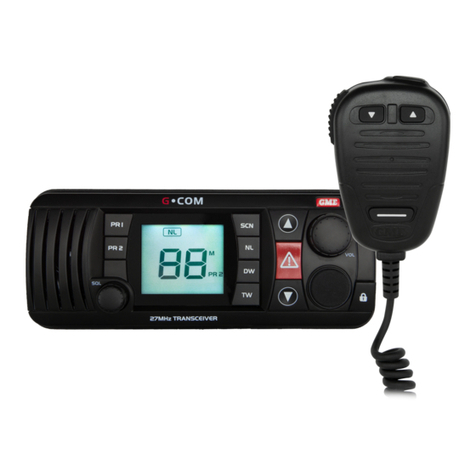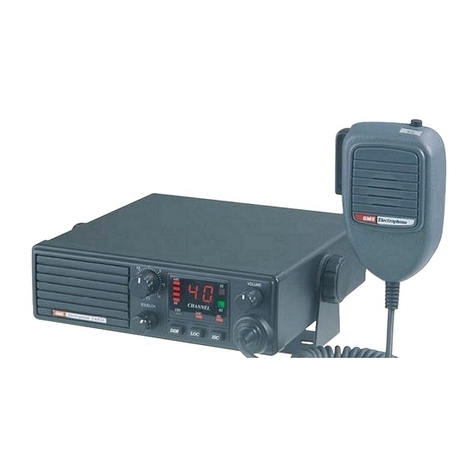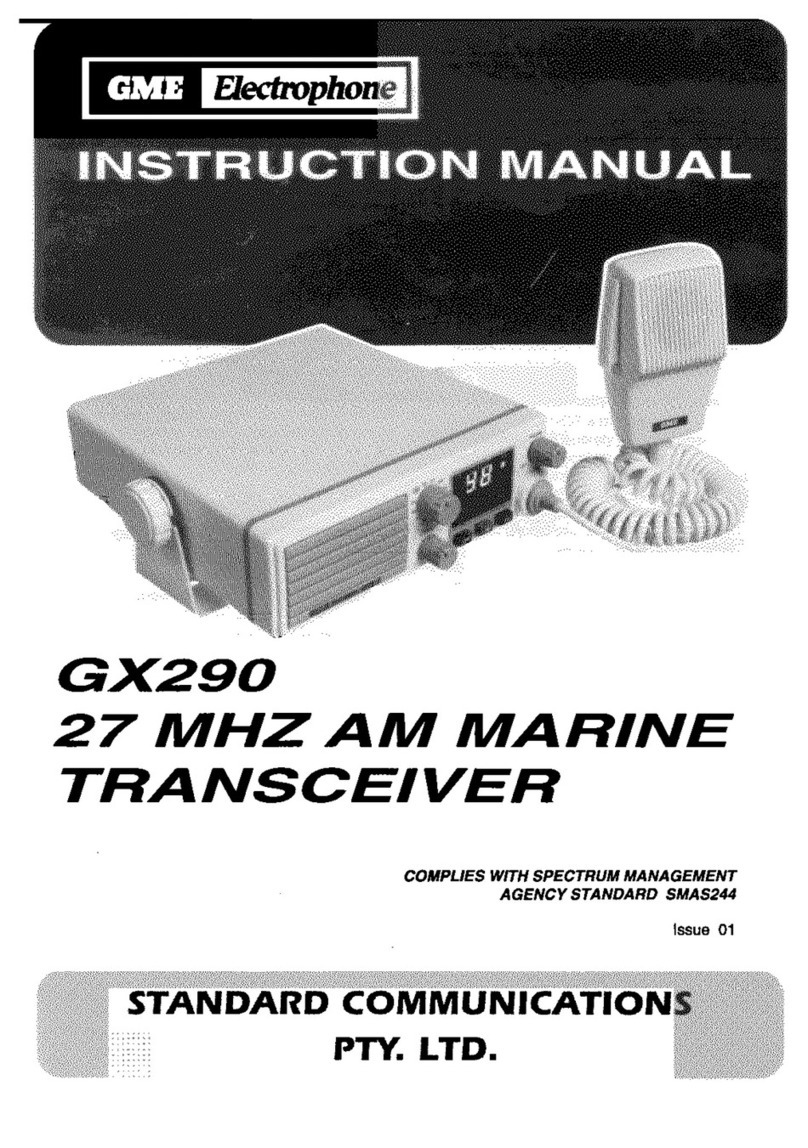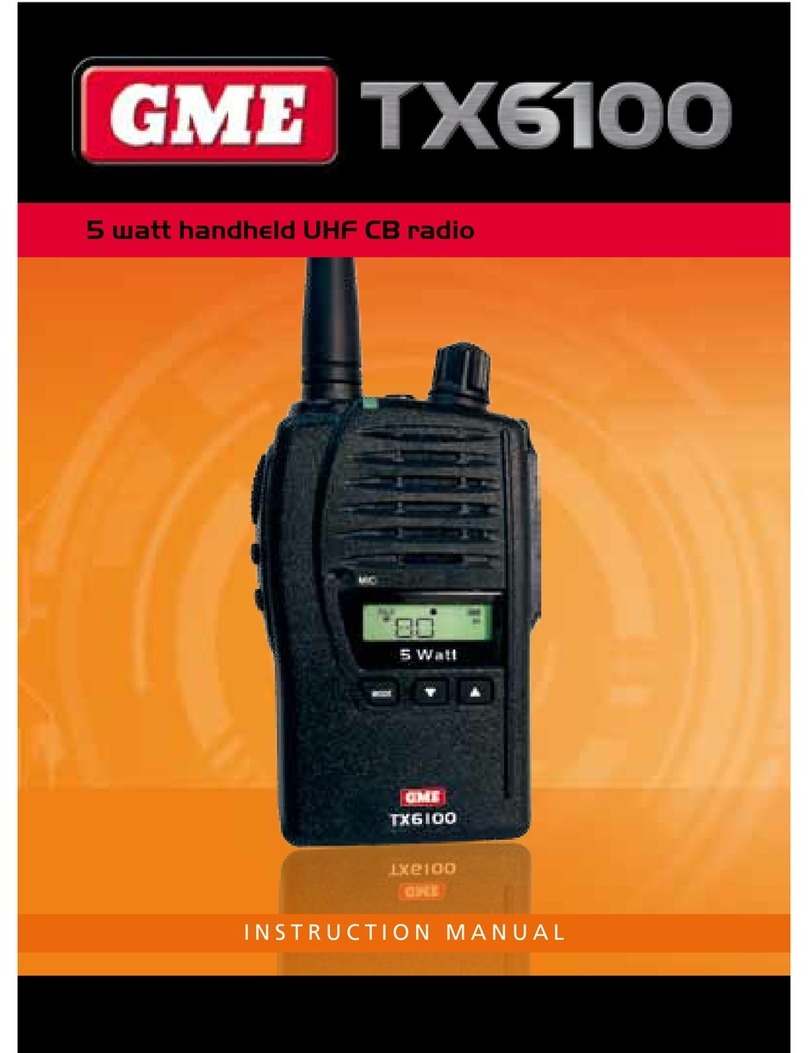Page 6 Instruction Manual TX7200
MAINTAINING YOUR BATTERY PACK
For information on removing, fitting and recharging the
battery pack, refer to ‘GETTING STARTED’ on page 3 of
this manual.
Your TX7200 is supplied with a 7.2 Volt 1200 mAh Ni-MH
(Nickel Metal Hydride) rechargeable battery pack. When the
battery pack is new, it must be fully charged before being
used for the first time.
If left unused, your TX7200’s battery pack will discharge
itself within a few months. If you have not used your
TX7200 for some time, you will need to recharge the
battery pack before use.
The battery pack is a sealed unit. There are no user
serviceable parts inside.
WARNING:
Use only GME Electrophone approved battery
packs and chargers. The use of any other types may be
dangerous and will void any warranty.
Low Battery Indicators
When the battery voltage drops to around 6 Volts, your
TX7200 will give 6 quick beeps, BATT will flash on the
display and the Tx/Busy LED will flash ‘Orange’ to indicate
that the battery needs to be charged. You should recharge
the battery pack as soon as possible.
If you have been transmitting using the High Power setting,
you can extend the life by switching to Low transmit power.
Battery Charging
It is recommended that you charge your TX7200’s battery
using the BCD001 rapid charger. The BCD001 rapid charger
can recharge your battery pack in around 1 hour, less if
there is still some charge remaining.
Cycling your Battery Pack
Cycling of your Ni-MH battery should not be necessary.
However, for maximum performance we recommend that
you try to fully discharge the battery from time to time
before recharging it.
Battery Usage
The time taken to discharge the battery pack will depend
on how you use your TX7200. The 1200 mAh battery pack
is powerful enough for a full days use under
average conditions.
Conserving Battery Power
The TX7200 has built in power saving features to help
you get the maximum amount of time between charges
from your Ni-MH battery pack. If you need to operate
your TX7200 in a situation where you require maximum
battery life (e.g. a remote site where there is no convenient
recharging facility nearby), the following hints can greatly
reduce the amount of power drawn from the battery pack.
Sleep Mode: The TX7200 will automatically enter the
‘Sleep’ mode after around 30 seconds of inactivity (i.e. no
transmission or reception).
While sleeping, it will still check for incoming signals
but it will draw only about one fifth of the power from
the battery. As soon as a signal is received or any keys
are pressed, the TX7200 will wake up again. This sleep
function is automatic and by itself can greatly extend the
battery life in standby mode by many hours.
Quiet Mode: If ‘Quiet’ mode is selected, the TX7200
will remain ‘asleep’ on Quiet channels even if they are busy
unless your Selcall Ident is received.
Scanning: The TX7200 draws more power from the
battery when scanning than when monitoring a single
channel. This is because it must wake more often to
monitor each channel for activity. You can squeeze
that extra bit of life from the battery by avoiding any
unnecessary scanning. In addition, scanning several
channels increases the chance of finding a signal thereby
keeping the receiver awake and the squelch open
more often.
USE ONLY GME ELECTROPHONE
APPROVED CHARGERS.
USE OF OTHER TYPES MAY BE DANGEROUS
AND WILL VOID THE WARRANTY.
DO NOT CONNECT YOUR VEHICLE’S 13.8 VOLT
BATTERY SUPPLY TO THE CHARGING SOCKET
AS DAMAGE WILL RESULT.






